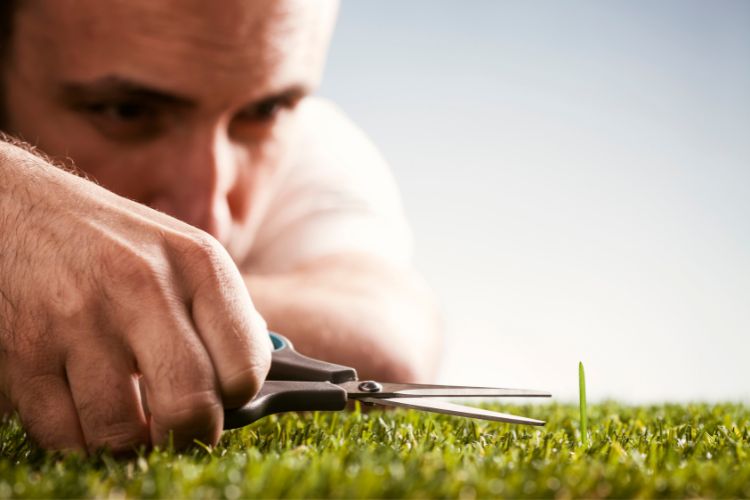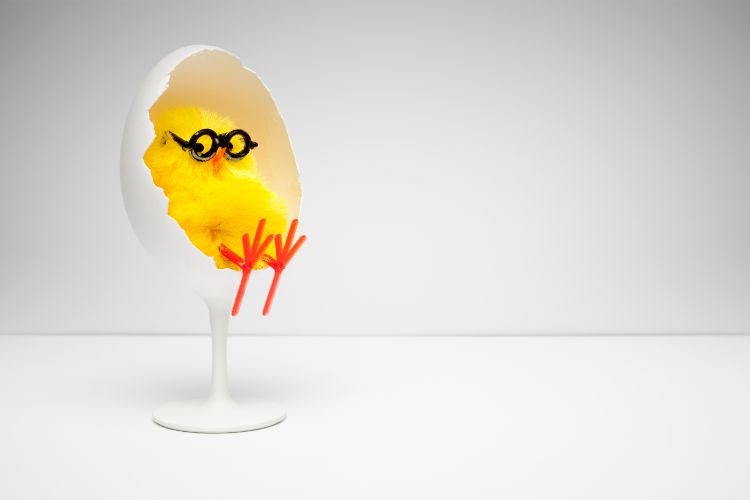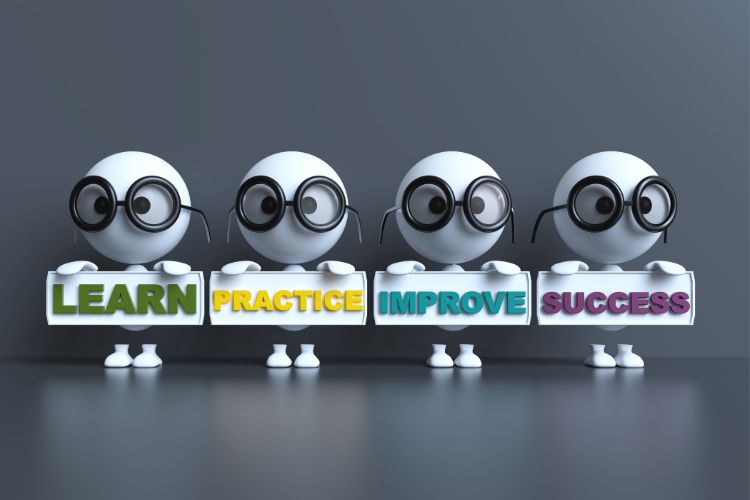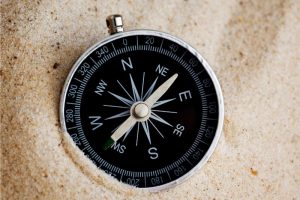For every person who does little to achieve his or her language-learning goals, there’s at least one other who does the exact opposite and dives in headfirst.
While the latter might sound admirable or impressive, it probably won’t work for you unless you really know what you’re doing and you’re a serial language learner.
Even if you are adept at learning languages, diving in headfirst still might not be an advisable approach. It’s a bit like jumping into the deep end of the pool. What if you can’t swim? Then what? Even if you can swim, what if the water is too cold or too shallow?
In my experience, learning a new language is a bit like slowly wading into new waters. There may be a time and place where jumping in headfirst makes sense, but more often, moving slowly and deliberately leads to a better outcome.
I believe four steps are necessary to properly engage with your new language. While these steps shouldn’t be taken as a hard set of rules, they have served those I’ve taught—and me—very well.
Step 1: Basic Research, Evaluation, and Planning
This is the first step in your language-learning journey. Ironically, it’s a step that is frequently skipped or where people tend to get stuck. We’ve already explored parts of this step in depth.

Goal: Decide which language you want to learn and why you want to learn it. Define your vision of success.
Effort: Think long and hard about your reasons and answers to the above, and consider how much time you can realistically invest in your language-learning efforts.
Time Investment: Be prepared to invest anywhere from a few hours to a few months.
Outcome: Develop a clear and honest view of what you want to learn, your reasons for doing it, and a well-defined goal.
The scope and duration of this step really depend on you.
This stage is introspective and requires you to be very honest with yourself regarding your reasons for learning a new language, what you think you can reasonably achieve, and the time frames you believe make sense.
Maybe you want to master Mandarin. Perhaps you just want to pick up a few basic phrases of Portuguese. If your goal is to speak to a Brazilian neighbor, you probably have a good sense of your answers to the questions that need to be explored at this step.
However, if you have dreams of learning and mastering 12 languages in six months because you were inspired by a spy movie…well, you might want to re-evaluate how realistic and honest you are being with yourself.
To use my analogy of wading into the water, this is where you determine which water you want to walk into and whether your goal is to cool off, learn how to swim in the deep waters, or do something in between.
Step 2: Scratch the Surface and Play
Once you decide which language you want to learn and why, and you define what success will look like, it’s time to get your hands dirty and begin to play around with your language.
This might shock you, but at this stage, I’d recommend reading a tiny bit about the grammar of the language. I don’t want you to study or memorize any grammar; I just want you to get a sense of the general structure of the language.

Questions to ask to get a general sense of your new language’s structure:
- Do words change based on how or where they’re used in a sentence? (Does the language use declensions?)
- Do nouns, adjectives, or verbs take on masculine or feminine prefixes, suffixes, or definite/indefinite articles? (Is the language gendered?)
- How different is the language from English?
This is all you’re looking for at this point.
You should also pick up a few phrases and some vocabulary along the way. That’s actually where you should spend your time.
The brief grammar scan I described above just prevents you from getting stuck on unfamiliar or irregular syntax. You may occasionally stumble, but a quick grammar scan can alleviate initial confusion.
Goal: Get a sense of the basic structure of the language
Effort: Pick up a few hundred vocabulary words and very basic phrases
Time Investment: About 40 to 60 hours
Outcome: Passive recall of very basic syntax and active ability to produce a few “go-to” phrases and expressions
Depending on your study efforts, if you invest anywhere from 30 to 60 minutes per day, five days per week, this step might take you a few weeks to a few months. It depends on your consistency.
Believe it or not, almost any reputable language-learning product, app, or resource will get you to this point. Whether you do it in 40 or 60 hours and whether the things you learn are relevant or helpful will depend highly on your personal goals and the resources you choose.

At this stage, you’re just splashing around in the water. Whether you know how to swim or not, it doesn’t take that much effort to get wet.
That said, be careful about your expectations at this step of your language-learning journey. If you happen to interact with native speakers of your target language, you’ll barely be able to express the most basic needs and desires.
To the extent you can do so, your expressions will be highly dependent on the materials you’ve studied, and any deviation from your course materials will be difficult to manage.
At the same time, somewhat ironically, the more confident and natural you’re at speaking a given phrase or expression, the more quickly your native-speaking partner will talk, and the more complex their speech will be.
This is where you realize you don’t really know how to swim, and some deep waters are ahead. That’s perfectly natural, but hang in there. Don’t let the temptation to give up win.
Believe me, as I’m speaking from experience here. I seriously considered giving up my efforts to learn a new language plenty of times.
This was mostly early on when I was first starting my language-learning journey. I’m glad I didn’t, though, because learning that first language paved the way to learning my second and third, and fourth.
That said, even today, sometimes I feel burned out and ponder taking a break. And you know what? It’s 100 percent OK to take breaks. I take them all the time. The key here is to ensure you’re not pushing yourself beyond burnout and then giving up.
Step 3: Getting Comfortable
As you continue on your language learning journey, you may be tempted to stay stuck at Step 2 and memorize the materials you are studying. This is a huge mistake.
As we’ll see in a future section, the human mind excels at language learning when it is presented with lots of new content.

Furthermore, rote memorization may help you internalize the meaning of a word or expression, but you may still struggle to use that expression in dynamic speech. You absolutely will struggle to modify something you learned rotely in order to say something new.
That’s why Step 3 is so important.
This is where you move beyond splashing around and get comfortable just being in the water. Are you swimming? Are you splashing? Is your form correct? Are you too close to the deep end? It doesn’t matter because you don’t care. You’re just comfortable being where you are.
Goal: Understand and participate in everyday speech
Effort: Pick up a few hundred vocabulary words and very basic phrases
Time Investment: About 200 to 300 hours
Outcome: Ability to engage in various everyday discussions on a moderate set of topics
Again, depending on your study efforts, achieving this step might take six months to a year.
There are probably only a handful of materials worth studying to get to this point, and I don’t think many people can get here just using one resource.
As I’ve mentioned, you’ll want to experiment with many different resources to find those that work for you.
Arriving at this stage is very rewarding, and funnily, you won’t realize you’ve achieved this level of language mastery until, one day, you recognize that words are coming out of your mouth that you don’t remember studying.
You’ll notice grammatical patterns, vocabulary, and pronunciation rolling out very fluidly.
Most critically, you’ll realize that the little translation machine in the back of your mind has turned off, and you’re no longer trying to translate from English into your target language on a word-by-word basis.
You’ll still have a very limited vocabulary. It might be anywhere from 2,500 to 5,000 words.
Most of that will be a passive recall, though, oddly, a word you can never seem to remember will just flow out of your mouth as you’re talking with a native speaker.
You’ll still have a hard time following the details of native speakers; they might speak too quickly or use vocabulary you don’t know.

Generally, about 80 percent of the time, you’ll have a sense of what’s happening.
Moreover, about 80 percent of the time, you’ll be able to express everything you want to. It may not be as detailed or colorful as you’d like, but your meaning will be clear.
You might note that my definition of “getting comfortable” falls short of the roughly 500 –1,000-hour estimates by the FSI and the CEFR.
There’s a simple reason.
I’ll probably never be a diplomat, and I’m not worried about passing a standardized test issued by the government to evaluate my academic progress.
That’s what the FSI and CEFR were developed to do. I’ll go out on a limb and guess you’re probably not an aspiring diplomat or academic student, either.
However, that doesn’t mean you’re not interested in a high mastery of your new language. That’s where we get to the final step.
Step 4: Ongoing Improvement

If you decide to move on to this step, it’s probably because you’ve come to value the language. Chances are high that you’ve fallen in love with the language, the culture, or maybe even a native speaker of the language.
This is where you enjoy the water so much you’ve decided to swim daily to improve your speed, efficiency, and form.
Goal: Keep getting better
Effort: Engage with various native speakers and/or materials
Time Investment: To infinity and beyond!
Outcome: Ability to consume a broad range of native materials and/or speak with native speakers without fear or hesitation
Step 4 is the last in your language learning process, but it’s one without end.
As I’ve noted before, even in your native language, if you’ve ever struggled to find the right words to capture a thought or emotion, you’re still evolving.
The same is true for the language you’re learning. There is no end to how far or deep you can go. It just depends on your interest and desire to do so.
Remember: You Define Your Own Success
As I close this section, I should point out that, except for Step 1, it’s absolutely OK to reach any of these steps and decide you’ve achieved success (I exclude Step 1 because if you never make any decisions, you’re never going to get anywhere).

I’ve met many serial language learners, and I feel that Step 2 for many languages is preferable to Step 3 or Step 4 for just a few.
I’ve met others who are absolutely obsessed with pursuing Step 4 as long and far as possible with just one language.
The point here is that you are in charge of deciding what makes you happy, and you’re also allowed to change your mind. Maybe you realize that the language you’re learning isn’t as interesting or practical as you’d thought.
Stop studying it. Maybe it’s too time-consuming to get to Step 3. Stop at Step 2. Maybe it’s so charming that your goal of reaching Step 2 morphed into achieving Step 4.
It’s entirely up to you.
Just have fun with it.







